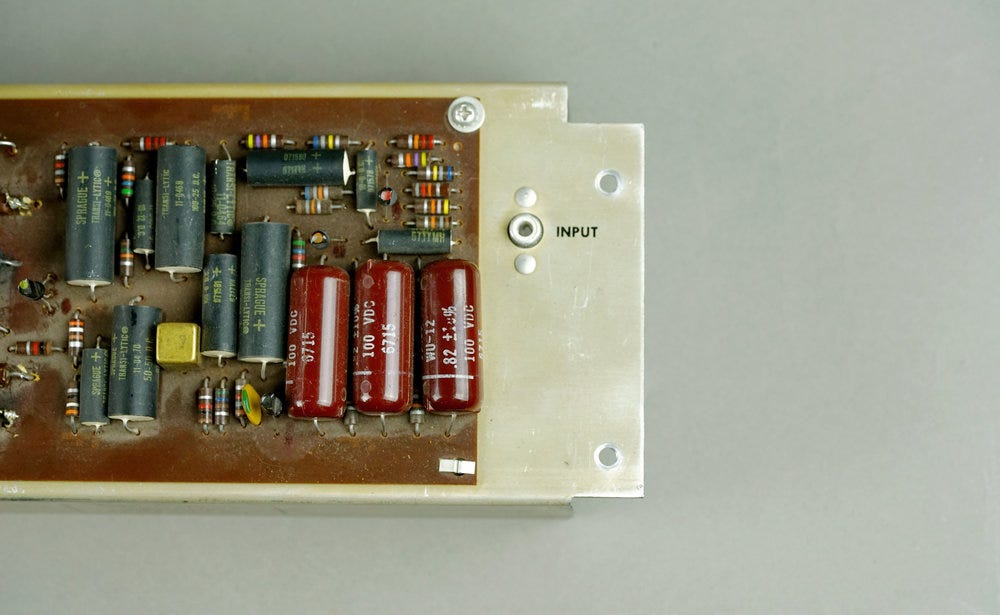
The input circuit is an extremely important part of any amplifier. Hum at the input will be amplified by each successive gain stage, so it's important to keep the input signal clean. Typically, you also want the input signal to be as complete as possible, with the full range of frequencies. You can always shape the tone later, in a less sensitive part of the circuit.
For this reason, most input circuits will have a minimum of components. This is also true for Wurlitzer electronic pianos. However, Wurlitzers have a couple of extra components at the input. These components vary slightly between models, but they always include a coupling capacitor and a current-limiting resistor. The purpose is to help deliver a polarizing voltage (around 120 V) to the Wurlitzer's reed bar.
Because the input signal is so important to the amp's tone, it's important that all of the components are in very good shape. If the amp is very old, it's often good practice to replace some of the original components with new, more reliable components.
In this article, I'll discuss some of the components that are typically found in the input circuit of an amplifier. I'll also share my recommendations on which input components should be replaced, and why.
